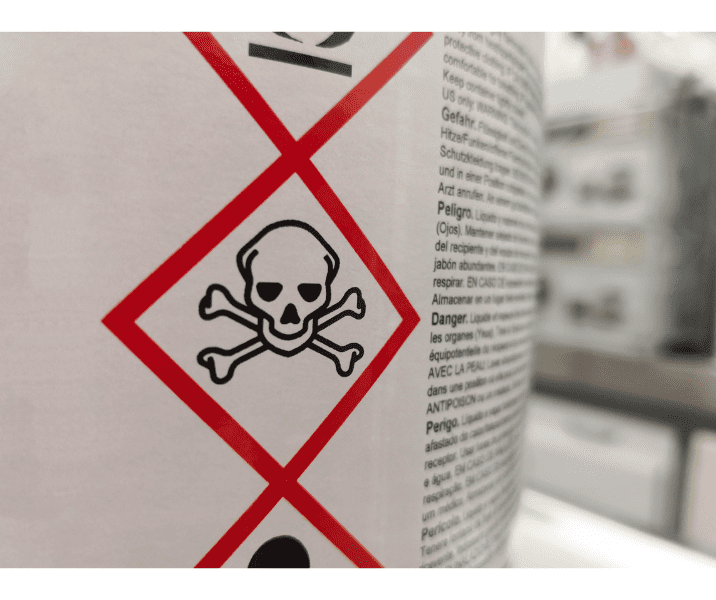For any jurisdiction, effective hazard communication is crucial in ensuring workplace safety and compliance with regulations. Yet, despite its importance, many manufacturers, distributors, and importers stumble in their hazard communication efforts. These missteps can lead to serious consequences, from workplace accidents to legal issues. Uncovering common mistakes made to avoid catastrophe is imperative for chemical manufacturers and importers, as well as distributors, and upholding employee safety. Verifying effective hazard communication systems begins with evaluating current systems in place.
In this blog, we’ll explore some of the most common mistakes in hazard communication and offer tips on how to avoid them.
Hazard Communication Systems: Ensuring Compliance
Hazard communication often lands in the top half of OSHA’s annual Top 10 Violations list. For fiscal years 2017 – 2020, Hazard Communication was the second most cited standard under OSHA. Hazard Communication dropped to number 4 for fiscal year 2021 which still places it in the top half of the list.
The top 5 areas where companies fall short of meeting Hazard Communication requirements are listed below.
1. Inadequate Labeling
Each container of hazardous chemicals in the workplace must be appropriately labeled, tagged or otherwise marked with the appropriate identifier, words, pictures and symbols that effectively convey general information regarding the hazards of the chemical. Proper labeling, in conjunction with other information available to employees under the hazard communication program should provide employees with specific information regarding the physical and health hazards of a chemical.
Mistake: One of the most frequent errors is failing to provide clear, comprehensive labels on hazardous chemicals. Labels must include critical information such as product identifiers, hazard pictograms, signal words, hazard statements, and precautionary statements.
Solution: Ensure labels are updated and meet regulatory standards like OSHA’s Hazard Communication Standard (HCS) or the Globally Harmonized System (GHS). Labels should be legible and include all necessary information to inform users of the chemical’s hazards and safe handling procedures.
2. Incomplete Safety Data Sheets (SDS)
Employers must have a safety data sheet in the workplace for each hazardous chemical used. Chemical manufacturers and importers must obtain or develop a safety data sheet for each hazardous chemical produced or imported. The preparer of the safety data sheet must ensure that it is in English, although copies in other languages may be maintained as well. Safety Data sheets must be in the proper 16 section format with the correct headings and associated information for each heading as outlined in Appendix D of 1910.1200.
Mistake: Another common issue is the use of incomplete or outdated Safety Data Sheets (SDS). SDSs are essential for providing detailed information on chemical hazards and safety measures, but they are often missing critical sections or fail to reflect current regulations.
Solution: Regularly review and update SDSs to ensure they are complete and compliant with current regulations. Each SDS should include all 16 sections as outlined by OSHA’s HCS, such as hazard identification, first-aid measures, and accidental release measures.
3. Failure to Train Employees
Employers must provide effective training to employees regarding hazardous chemicals in their work area. Training should include the location (work area) where hazardous chemicals are present and the nature of those hazards. Information should be provided on how to detect the presence of or release of a hazardous chemical through methods and observations (such as monitoring and the visual appearance and odor of hazardous chemicals). The location and availability of the written hazard communication program, list of hazardous chemicals and safety data sheets must be made known to employees. An explanation of the labeling system and how to utilize and understand the safety data sheet should be included in training. Additionally, employees should be trained on the proper measures to prevent chemical hazards and exposure with appropriate work practices, emergency procedures and the proper use of personal protective equipment.
Mistake: Many organizations overlook the importance of training employees on hazard communication. Even with the right labels and SDSs, if employees are not properly trained, they may not understand or follow safety protocols.
Solution: Implement comprehensive training programs that cover the basics of hazard communication, proper handling procedures, and emergency response. Ensure training is ongoing and updated whenever there are changes to chemicals or safety procedures.
4. Neglecting to Communicate Hazards Down the Supply Chain
Mistake: Manufacturers and importers sometimes fail to communicate hazards effectively throughout the supply chain. This includes not passing on hazard information to distributors or downstream users, which can result in a lack of safety awareness at various points.
Solution: Establish a robust system for communicating hazard information across the supply chain. This includes providing accurate labels and SDSs to distributors and ensuring they are also aware of any changes that may affect safety.
5. Ignoring Regulatory Changes
Mistake: Regulations surrounding hazard communication can change, but some organizations do not stay updated or fail to adjust their practices accordingly. This can lead to non-compliance and increased risk of accidents.
Solution: Stay informed about regulatory changes and ensure your hazard communication practices are always up to date. Regularly review and adjust your labels, SDSs, and training programs in response to new regulations.
6. Inconsistent Hazard Communication Practices
Mistake: Inconsistencies in hazard communication practices, such as varying formats for labels and SDSs, can confuse users and compromise safety.
Solution: Standardize hazard communication practices across all products and locations. Use consistent formats for labels and SDSs, and ensure that all employees are familiar with and adhere to these standards.
7. Poorly Designed or Missing Hazard Signs
Mistake: Hazard signs and warning symbols that are poorly designed or missing can fail to catch attention or convey the necessary urgency. This can lead to unsafe practices and accidents.
Solution: Invest in clear, visible hazard signs that use standard symbols and language. Make sure they are placed in prominent locations where they will be easily seen and understood by everyone who may come into contact with the hazards.
8. Lack of Incident Reporting and Feedback Mechanisms
Mistake: Not having a system for reporting incidents or providing feedback can result in unresolved safety issues and a lack of continuous improvement in hazard communication practices.
Solution: Implement a system for reporting safety incidents and gathering feedback from employees. Use this information to make necessary adjustments to hazard communication practices and enhance overall safety.
How TotalSDS Can Help You Avoid Hazard Communication Mistakes
Hazard communication is a critical component of workplace safety, but common mistakes like inadequate labeling, incomplete SDSs, and lack of training can jeopardize safety and compliance. TotalSDS platforms for SDS authoring and management offer a powerful solution to these challenges by ensuring accurate, up-to-date documentation and streamlined communication processes. By leveraging TotalSDS, manufacturers, distributors, and importers can enhance their hazard communication practices, maintain compliance with regulations, and ultimately create a safer working environment. Get in touch to learn more.



